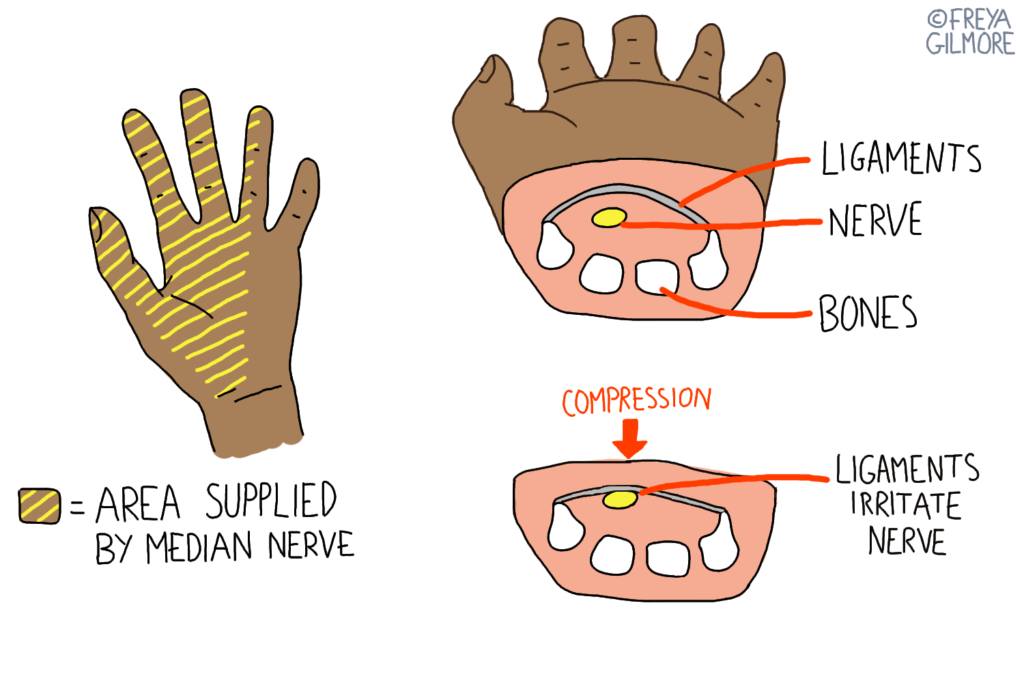The carpal tunnel is a small space in the front of the wrist, through which nerves, vessels, and tendons run. Because the space is so small, compression of the structures inside is not uncommon, leading to pain and other symptoms into the hand.

Causes of Carpal Tunnel Syndrome
There will often be a number of factors that lead to a case of carpal tunnel syndrome. Some of the more prevalent ones are listed below.
Swelling in the Wrist
Some conditions cause generalised swelling, which could add pressure to the carpal tunnel if that area is affected. General water retention in pregnancy can cause this, as can conditions like lymphoedema. Osteopathy can support you through either of these, but ultimately pregnancy induced water retention will continue until birth, and lymphoedema will be an ongoing issue to manage.
Treatment in these cases will involve gentle, repetitive massage techniques that aim to move excess fluid back into circulation. We can also offer exercises to further encourage this, and show you how to perform similar techniques at home. When a nerve is irritated, it can become more sensitive with irritation over time, so by reducing the frequency or severity of episodes, you will work towards a longer term benefit.
Suboptimal Ergonomics
Repeated or prolonged pressure on the underside of the wrist can irritate the nerve in question. A common example of this pressure is computer work. If you have a mouse mat with a cushion built in, that might be part of the problem. Resting the wrist on the cushion, especially if your desk set up encourages the wrist to hit the mat at an angle.
General rules for desk ergonomics to benefit the wrist include:
- making sure your arm rests are level with the desk (and that they’re half length if possible)
- avoiding unnecessary pressure on the wrist
And if you find yourself working on a laptop away from a table (for example, on the sofa or in bed), try to avoid leaning on the keyboard with your wrist, or sitting in a way that encourages your wrist to over-flex or over-extend.
Misdiagnosis of Carpal Tunnel Syndrome
Occasionally we see patients who have had unsuccessful carpal tunnel release surgeries, sometimes even more than once. Although the symptoms of the condition are quite clear-cut, there are other issues that can cause similar aches and pains. The very same nerve can be irritated by something further up the arm, potentially giving identical symptoms, despite the wrist presenting no issue. Similarly, compression of a nerve around the shoulder or neck can lead to the same symptoms in a very slightly different area of the hand. Again, surgery to release the tunnel would provide no benefit as it was not causing the issue.
Osteopathic Treatment
In contrast to surgery, osteopathic treatment is very conservative. We can diagnose in clinic, using special orthopaedic tests rather than scans. Treatment itself is gentle, using techniques to encourage any swelling to return to circulation, alongside massage techniques to reduce tension through the soft tissues within the tunnel.
Exercises can be very beneficial, and will be prescribed based on your specific case. Movement is generally better than restriction, but there are cases in which intermittent use of a splint or wrist support can be helpful. Your osteopath with advise whether this applies to you.
Make an appointment for your carpal tunnel syndrome with Beverley here
